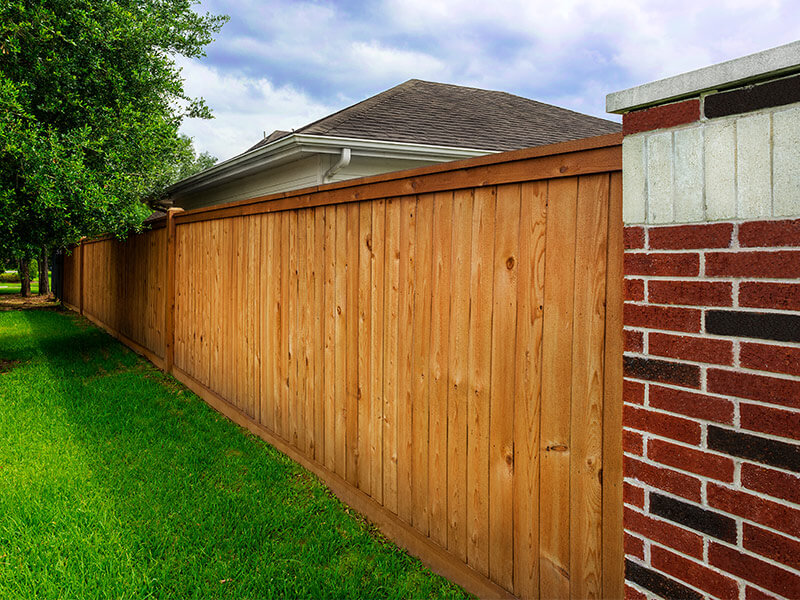Protect Your Financial Investment with Professional Fence Staining Solutions!
Wiki Article
How to Pick the Right Fencing Spot for Your Property
When it involves improving the look and resilience of your residential or commercial property's fencing, choosing the best tarnish is an essential decision that requires mindful factor to consider. With a myriad of options readily available in the marketplace, each dealing with different timber kinds, colors, and openness levels, the process can promptly come to be overwhelming. Nevertheless, making an informed choice can considerably impact the general looks and durability of your fencing. So, just how can you guarantee that you pick the ideal fencing discolor that aligns with your residential or commercial property's style and maintenance demands? Allow's discover some key factors to lead you in this decision-making procedure.Understanding Wood Kind
To choose the ideal fence stain, it is necessary to have a thorough understanding of the different types of wood typically made use of for secure fencing. The option of wood plays a vital duty in establishing the longevity and general appearances of the fence. Cedar is a prominent choice because of its natural resistance to decay and bugs, making it a sturdy alternative for outdoor frameworks. Pine is an additional usual wood made use of in fencing, recognized for its cost and convenience of staining. Nevertheless, ache is more vulnerable to bending and decomposing compared to cedar. Redwood is a premium choice known for its striking look and all-natural durability, though it includes a higher cost. When picking a fencing discolor, it is important to think about the kind of wood being used to guarantee compatibility and optimal protection. Recognizing the qualities of different wood kinds will help you make an educated choice when it concerns choosing the ideal fencing stain for your property - Nashville Fence Staining Services.Picking the Right Color
Selecting a suitable hue for your fence discolor is a critical choice that considerably influences the general visual appeal of your building. The shade you select should match the design of your home, mix harmoniously with the environments, and reflect your individual taste. When choosing a shade, think about the existing color scheme of your residential or commercial property. For a natural appearance, earthy tones like browns, environment-friendlies, or grays function well. These colors can aid the fencing mix into the landscape and create a cohesive look. If you choose a more contemporary or strong appearance, think about choosing darker tones like black or deep charcoal for a striking contrast. Lighter shades such as whites or light grays can make a fencing show up bigger and include a touch of beauty to your home. Ultimately, the appropriate color selection will boost the charm of your fencing and boost the overall aesthetic charm of your home.
Considering Openness Degrees
When choosing the appropriate color for your fence stain, an additional important facet to think about is the degree of transparency that will certainly finest fit your residential or commercial property's visual and maintenance demands. Openness degrees in fence discolorations normally drop into three classifications: transparent, semi-transparent, and Fence Staining strong. Take into consideration the degree of direct exposure your fencing deals with, the preferred maintenance frequency, and the visual you desire to achieve when selecting the ideal transparency degree for your fence stain.Examining Upkeep Demands
Taking into consideration the durability and upkeep of your fencing, assessing the upkeep demands is crucial in establishing one of the most suitable fence discolor for your home. The degree of maintenance required for your fencing can differ relying on factors such as the kind of wood, climate condition in your area, and your personal choices.When examining upkeep needs, it is vital to consider the longevity of the fence stain. Some discolorations call for more regular reapplication than others, so choosing a discolor with a much longer lifespan can help minimize the overall upkeep requirements of your fence (Fence Staining). Additionally, elements such as resistance to UV rays, water, and mold can affect how often you need to re-stain your fence

Evaluating Examples Prior To Application
Before using any fencing tarnish, it is recommended to conduct sample examinations to make certain compatibility with the wood and wanted aesthetic end result (Fence Staining Nashville TN). Examining examples permits you to assess just how the discolor will interact with the specific sort of wood used in your fencing, as different timbers can take in spots in different ways. To begin, select a small low-profile location of the fencing to use the stain samples. It is suggested to evaluate multiple discolor choices on this area to contrast colors and finishes. Think about just how the discolor looks when completely dry, as it might appear various from its damp application. In addition, observe exactly how the stain matches the existing components in your outside space, such as landscaping or the color of your home. Remember of just how the tarnish holds up to climate condition like sunlight and dampness. By testing samples before full application, you can make an informed choice that enhances the general appearance of your property while shielding the timber successfully.Conclusion
To conclude, selecting the proper fence stain for your property involves recognizing the timber type, selecting the right color, thinking about openness levels, reviewing upkeep requirements, and testing examples prior to application (Fence Staining). By taking these aspects right into factor to consider, you can ensure that your fencing discolor matches your building while giving the needed security and sturdiness. Make a notified decision to boost the look and durability of your fencingReport this wiki page